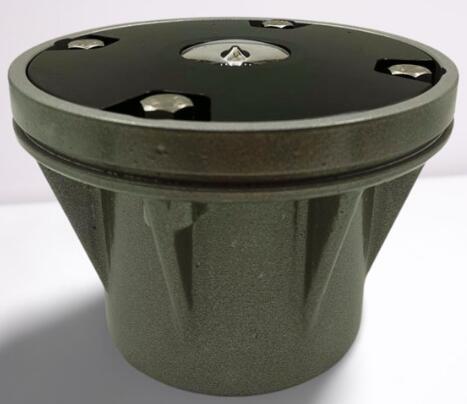Helipad Lights Price: Understanding What Drives the Cost Without Naming It
When exploring aviation infrastructure, one of the recurring topics for decision-makers and facility operators is helipad lights price. Although it's common to search for exact figures, it's more meaningful to understand the factors that shape those figures rather than merely focusing on a number. This article breaks down the key elements that influence helipad lighting systems, helping stakeholders make informed choices without focusing solely on digits.
What Are Helipad Lights?
Helipad lights are specialized aviation lighting fixtures designed to illuminate helicopter landing zones (helipads). These systems support safe takeoffs and landings during low visibility, night-time operations, or adverse weather conditions. Depending on the configuration, a lighting system can include perimeter lights, touchdown lights, floodlights, obstruction lights, and approach lighting arrays.

Whether installed on a hospital rooftop, an offshore oil platform, or a corporate tower, these lights serve a critical function. But what makes helipad lights price so variable?
Core Factors Influencing Helipad Lights Price
Understanding what influences the helipad lights price requires examining both technical specifications and environmental considerations. The cost is rarely about a single fixture—it’s about the system as a whole.
1. Lighting Type and Configuration
Different components are involved in helipad lighting systems:
Perimeter Lights: Installed around the edges to define the touchdown zone.
| helipad lights price | helipad lights |
Floodlights: Provide ambient illumination across the helipad surface.
Inset Lights: Installed flush into the surface for minimal profile.
Approach Lights: Guide pilots into the helipad's path of descent.
Obstruction Lights: Highlight nearby hazards like antenna towers or rooftop equipment.
The number and type of fixtures required vary based on the design of the helipad, its use-case (civil, medical, offshore), and regulatory requirements. More complex layouts naturally lead to higher system-level costs.
2. Compliance with Aviation Standards
Adherence to international and local standards (e.g., ICAO Annex 14, FAA AC 150/5390-2, CAP 437 for offshore platforms) significantly influences design specifications. Lights that meet these certifications are built to rigorous standards of intensity, color, durability, and safety—adding to their engineering complexity.
Customization to comply with different regions’ regulations can add to the final value of a lighting package.
3. Technology and Features
Modern helipad lighting includes advanced features like:
LED-based efficiency
Remote control capabilities
Dusk-to-dawn automation
Solar-powered or hybrid configurations
Smart diagnostics and status monitoring
Each of these upgrades adds value and functionality but also impacts the overall helipad lights price. For example, choosing a solar-powered, self-contained perimeter light will differ significantly from a traditional wired version with external power supply needs.
Installation Environment and Its Impact
Environmental conditions play a crucial role in choosing lighting systems and understanding their pricing structure.
• Offshore Installations
Offshore helipads require corrosion-resistant materials, weather-sealed housings, and additional certifications for marine use. These enhancements are essential but increase the baseline system cost due to higher-grade components.
• Urban Rooftops
Helipads on skyscrapers face challenges like wind load, vibration, and limited access for maintenance. Lights designed for such installations need low profiles, durable construction, and simplified wiring—all factors that contribute to price variation.
• Remote or Temporary Locations
Military or emergency-response operations often require portable lighting. These systems are battery-operated, solar-capable, and rapidly deployable, leading to unique design considerations and cost dynamics.
Power Systems and Control Integration
How the lights are powered and controlled also impacts the total value of a system.
Wired Systems require trenching, cabling, and control panels, adding labor and equipment costs.
Solar Systems are more self-contained but must include battery packs, controllers, and weatherproof enclosures.
Hybrid Systems offer both AC and solar charging options for redundancy but demand sophisticated circuitry.
Control options—from manual switches to app-based remote controls and integration with air traffic systems—also influence the overall helipad lights price by increasing complexity and functionality.
Durability, Maintenance, and Lifecycle Value
Another often overlooked factor in helipad lights price is long-term durability and maintenance requirements. Low-cost fixtures may lead to higher operational costs if they need frequent replacement, cleaning, or repairs.
Premium-grade lights may come with features like:
IP68 waterproof rating
Marine-grade aluminum or stainless-steel housing
UV-resistant lenses
Modular, field-replaceable components
These attributes help reduce lifetime costs even if the initial procurement value is higher.
Customization and Turnkey Solutions
Standardized lighting kits are available, but many installations require tailored solutions. This can involve:
Custom mounting hardware
Unique color configurations (e.g., amber or white per regional requirement)
Adaptation to local weather or altitude
Integration with building automation systems
Bespoke configurations require expert design consultation, manufacturing adjustments, and sometimes site-specific testing—all contributing factors to helipad lights price.
The Human Element: Expertise and Support
When choosing helipad lighting systems, it's not just about hardware. Providers offering consultation, compliance certification assistance, design simulations, and post-installation support typically include these services in the overall pricing.
While this may not be visible in an itemized quote, this layer of support is invaluable—particularly for hospitals, government agencies, or offshore operators seeking worry-free installation and regulatory approval.
Trends Influencing Future Pricing
As technology and sustainability continue to evolve, several trends are impacting the future of helipad lighting:
Miniaturization: Smaller, more efficient lighting units are being developed for reduced footprint and easier installation.
Increased Autonomy: AI and smart diagnostics allow predictive maintenance, reducing lifecycle costs.
Environmentally-Friendly Materials: Eco-compliance is becoming standard in new product designs.
Global Supply Chains: Manufacturing shifts and logistics impact both lead time and base value.
These innovations aim to increase value without necessarily increasing cost, potentially shifting the focus from upfront pricing to performance-per-dollar over time.
